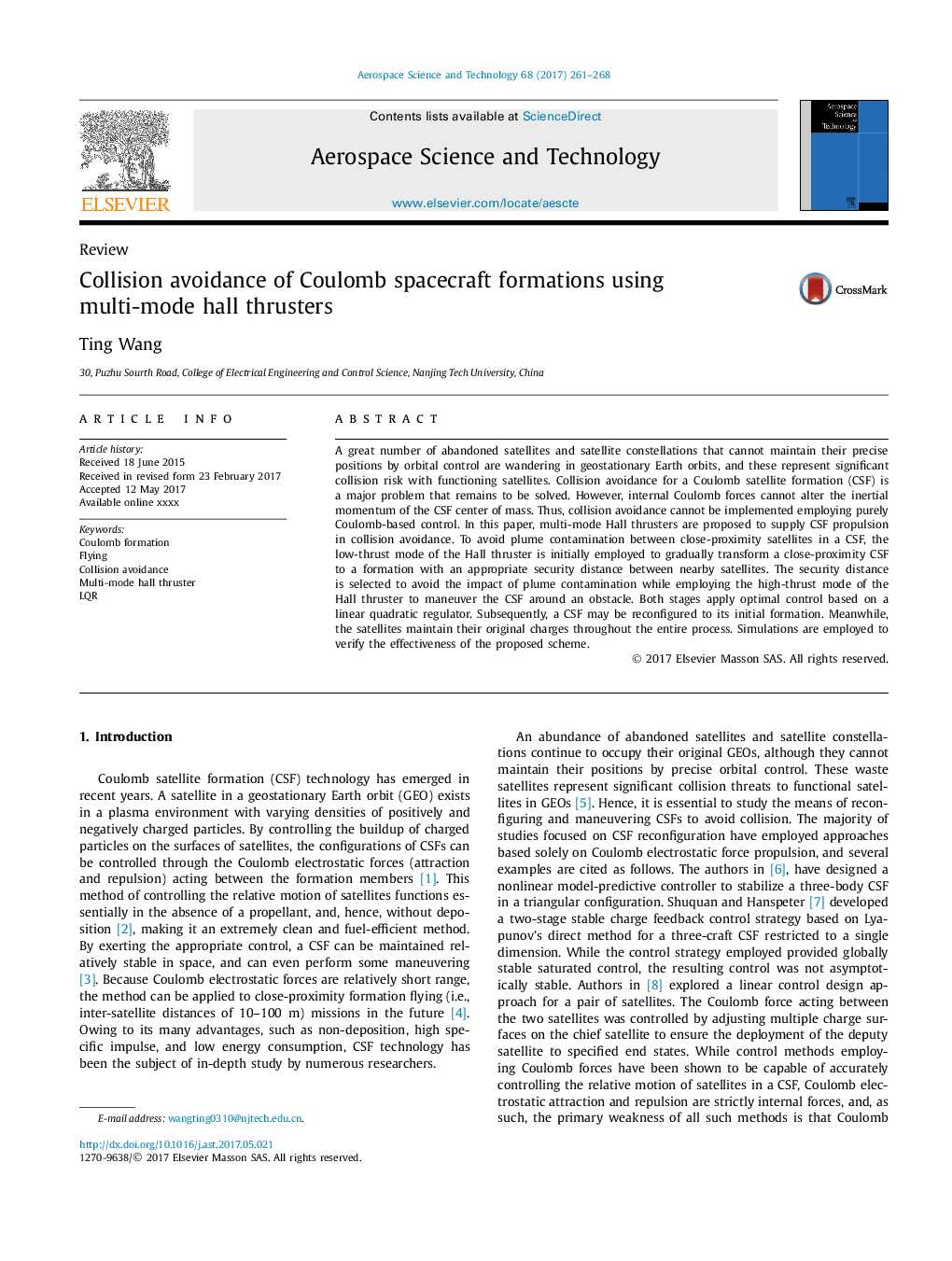| Article ID | Journal | Published Year | Pages | File Type |
|---|---|---|---|---|
| 5472911 | Aerospace Science and Technology | 2017 | 8 Pages |
Abstract
A great number of abandoned satellites and satellite constellations that cannot maintain their precise positions by orbital control are wandering in geostationary Earth orbits, and these represent significant collision risk with functioning satellites. Collision avoidance for a Coulomb satellite formation (CSF) is a major problem that remains to be solved. However, internal Coulomb forces cannot alter the inertial momentum of the CSF center of mass. Thus, collision avoidance cannot be implemented employing purely Coulomb-based control. In this paper, multi-mode Hall thrusters are proposed to supply CSF propulsion in collision avoidance. To avoid plume contamination between close-proximity satellites in a CSF, the low-thrust mode of the Hall thruster is initially employed to gradually transform a close-proximity CSF to a formation with an appropriate security distance between nearby satellites. The security distance is selected to avoid the impact of plume contamination while employing the high-thrust mode of the Hall thruster to maneuver the CSF around an obstacle. Both stages apply optimal control based on a linear quadratic regulator. Subsequently, a CSF may be reconfigured to its initial formation. Meanwhile, the satellites maintain their original charges throughout the entire process. Simulations are employed to verify the effectiveness of the proposed scheme.
Keywords
Related Topics
Physical Sciences and Engineering
Engineering
Aerospace Engineering
Authors
Ting Wang,
